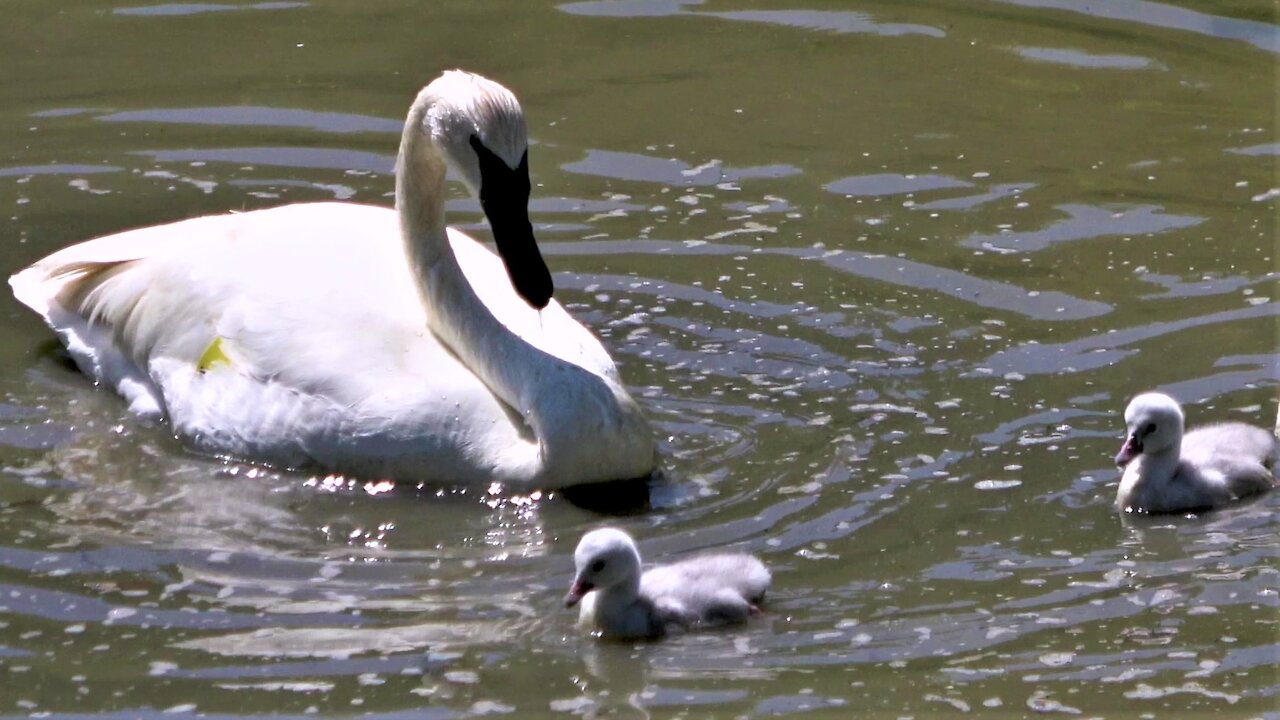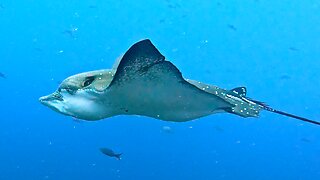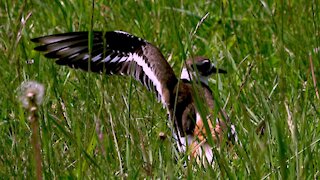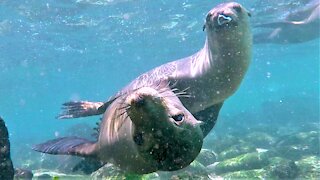Premium Only Content

Swan parents teach young how to stir up food in the pond
Trumpeter swans are magnificent birds that can reach an incredible size with a wingspan of more than 2.5m (8 feet). They are the largest bird native to North America, growing to more than 13kg (30 pounds) in weight. Although the young will eat insects as well as plants, these birds are herbivores once they reach maturity. They feed mainly on water plants and algae, foraging beneath the surface for aquatic plants and roots.
These swans are stomping the mud with their feet to clear and loosen the soil around the underwater roots. They eat pieces of plants that rise to the surface and they also reach underwater to twist and bite plants and roots that have been made accessible. The babies are taking advantage of their parents' efforts and watching closely to see how it is done.
Although they are tagged, these are wild swans that have been released as part of a breeding program at the Toronto Zoo in Ontario, Canada. The tags help to track the birds and evaluate the success of the mating pairs, as well as providing valuable information for future conservation. Trumpeter swans usually mate for life and they will often return to this pond at the zoo after release. The zoo provides ideal habitat for breeding and raising the young, known as cygnets. Both makes and females courageously defend the young for 3-4 months. A unique behaviour of the trumpeter swan is prolonged thrashing of the water with their wings and feet in what is believed to be a deterrent for snapping turtles that would prey on the vulnerable young cygnets.
Trumpeter swans came dangerously close to extinction in the 1930s when it was believed that there were as few as 70 individuals. A population was discovered in Alaska and conservationists and wildlife agencies teamed up to assist in breeding and reintroduction. Healthy populations have been restored throughout North America.
While most people understand the issues of concern that exist with some zoos around the world, there is also a very positive side that is less understood. Organizations like the Toronto Zoo play a vital role in understanding, and conserving wildlife around the planet. Through education, volunteering, funding, and providing critical expertise, we have been able to reverse some of the catastrophic effects of human population growth.
-
 1:34
1:34
WildCreatures
4 days ago $6.76 earnedMajestic Spotted Eagle Rays Fly Past Scuba Diver in the Galapagos Islands
24.7K8 -
 1:17
1:17
NataliaCara
5 years agoYoung rescued tayra searches for hidden food
2.11K -
 1:35
1:35
WildCreatures
4 years ago $1.66 earnedMother killdeer and her mate are extremely dedicated parents
6.02K38 -
 1:25
1:25
WildCreatures
4 years ago $8.98 earnedYoung sea lions surround delighted swimmers for playtime
18.1K19 -
 0:31
0:31
ViralHog
4 years ago $0.01 earnedYoung Beaver Ride's on Adult Beavers Tail
303 -
 2:07
2:07
Benfilm
5 years agoA wonderful meeting with a young wild foal
10.3K10 -
 1:06
1:06
jbon9319
4 years agoTeach them young!
50 -
 8:01
8:01
ViralHog
5 years ago $0.16 earnedYoung Bear Pays Porch a Visit
4551 -
 0:36
0:36
emmylou89
4 years agoTeach them while there young!
54 -
 LIVE
LIVE
SpartakusLIVE
6 hours agoSpart Flintstone brings PREHISTORIC DOMINION to REDSEC
439 watching